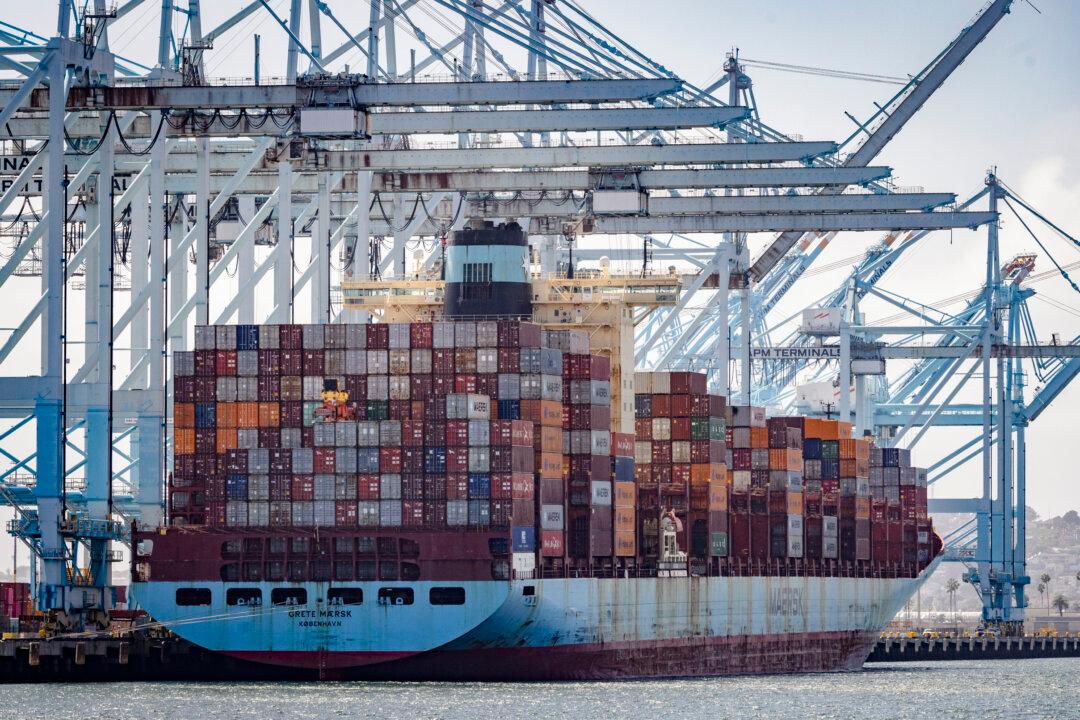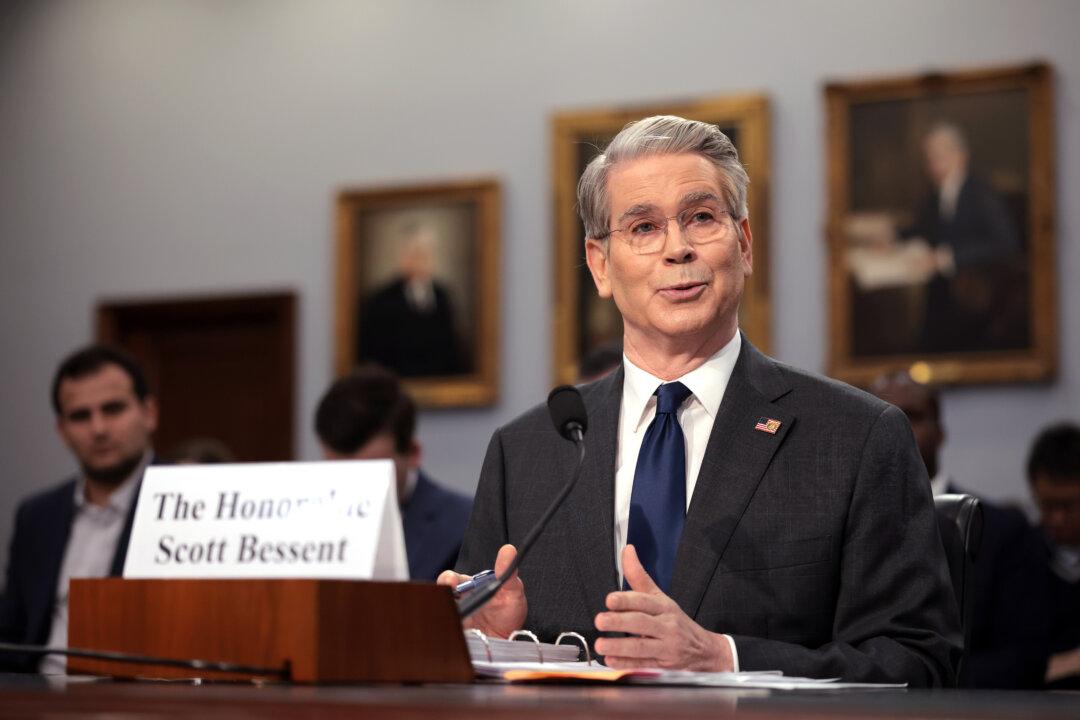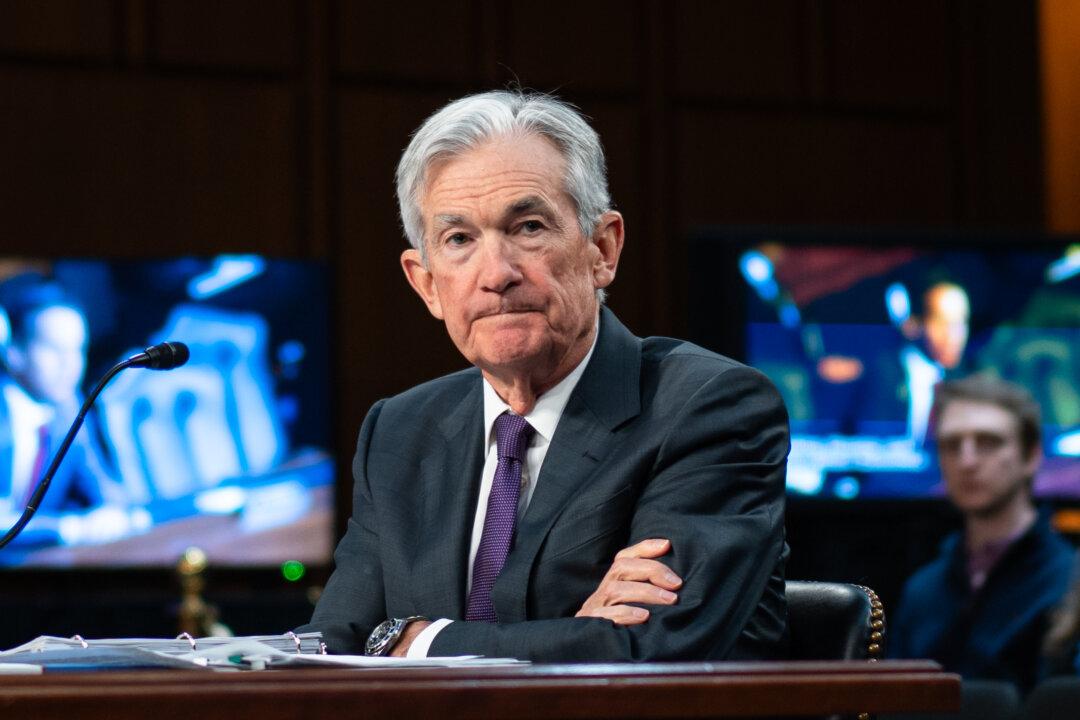The U.S. trade deficit widened to a record high in March as companies accelerated their imports ahead of U.S. tariffs taking effect.
The monthly international trade deficit includes goods and services.
Market watchers had anticipated a trade shortfall of $137 billion.
Imports increased by 4.4 percent to a record high of $419 billion as businesses bolstered their purchases from abroad before the government made further tariff announcements.
Companies purchased a greater amount of pharmaceutical preparations, finished metal shapes, passenger cars, and computer accessories.
Exports rose at a tepid pace of 0.2 percent but hit a record $278.5 billion in March. U.S. companies shipped more industrial supplies and materials, passenger cars, and computer accessories.
America’s trade deficit with the European Union climbed to $48.3 billion from $30.9 billion, and its deficit with Ireland surged to $29.3 billion from $15.3 billion.
The U.S. trade deficit with China narrowed to $24.8 billion from $26.6 billion. The gap also diminished with Switzerland, from $18.8 billion to $14.7 billion. America’s trade deficit with Canada eased to $4.9 billion from $7.4 billion.
So far this year, the trade deficit has dragged down economic growth.
In the first quarter, the U.S. economy contracted by 0.3 percent, fueled primarily by a 41 percent spike in imports. The Bureau of Economic Analysis subtracts imports from the gross domestic product (GDP) because the United States is purchasing more goods and services from foreign markets than domestically produced alternatives.
The previous quarter’s decrease may have been a one-off. The Federal Reserve Bank of Atlanta’s GDPNow Model estimate suggests a 1.1 percent expansion in the second quarter, fueled by an expected improvement in the trade deficit.
President Donald Trump and senior administration officials have repeatedly criticized the trade imbalance.
“Our large and persistent trade deficit has been over 30 years in the making, and it will not be resolved overnight, but all of this is in the right direction.”
Others have pushed back against the White House’s trade deficit concerns.

Minneapolis Federal Reserve President Neel Kashkari says a trade deficit signals investor confidence in the United States.
Volatility in Trade Dynamics
Export bookings to the United States have remained resilient despite week-to-week volatility, according to data compiled by trade tracker Vizion. For the week ending April 28, export container booking volumes slipped 3.2 percent from the previous week but increased 8.4 percent year over year.However, U.S. exports to China have plummeted, collapsing by approximately 80 percent by the end of last month, “pointing to deep disruptions tied to sourcing shifts, policy retaliation, or softening U.S. demand,” the firm said in a report.
“Tariff adjustments in March and April may have prompted cautious booking behavior or encouraged front-loading ahead of new policies. Meanwhile, shifting demand from key global markets is influencing volumes.”
“We expect container volume and average rates in the second quarter to be lower year over year,” Matson CEO Matt Cox said in a call with shareholders and analysts.
“At the moment, it’s difficult to know if these lower volume levels are transitory or will persist for a longer time in 2025, and the duration of this lower demand period will likely depend on active negotiations taking place across the supply chain, and the timing of potential amendments to the tariffs.”
Conditions could stabilize now that the “tariff shock has passed,” says Jay Woods, chief global strategist at Freedom Capital Markets.
“We got the worst of the tariff news and are starting to ‘negotiate’ and scale things back,” Woods said in an email to The Epoch Times.
“I think we’re very close to some deals,” Bessent said, adding that announcements could occur this week.
Trump recently added to his tariff plans by proposing on Truth Social a 100 percent tariff on movies produced outside the United States, saying, “We want movies made in America, again!”
He later clarified to reporters on May 5 that he would meet with America’s film industry to “make sure they’re happy” with his concept.







